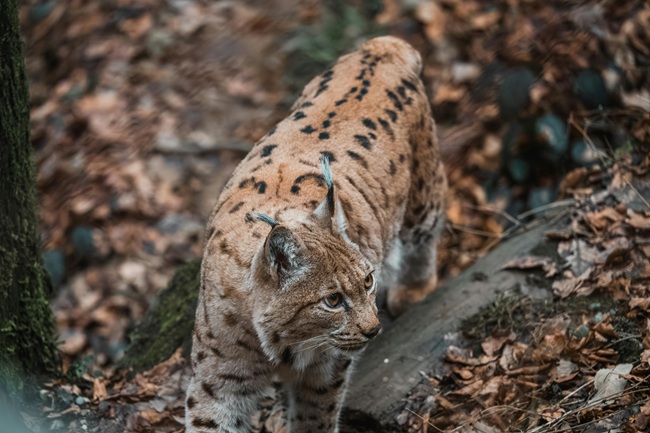
The bobcat, scientifically known as Lynx rufus, is a captivating and elusive species that roams the wilderness of North America. Enjoy these fun facts about this highly adaptable and stealthy creature.
Stealthy Stalkers: Bobcats are renowned for their stealth and hunting prowess. They are incredibly agile and can quietly stalk their prey through various terrains.
Solitary Lifestyle: Bobcats are generally solitary animals. They prefer to live and hunt alone, except during the breeding season when males and females come together temporarily.
Territorial Creatures: Each bobcat has its territory, which it marks with scent markings. These territories can range from 5 to 50 square miles, depending on the availability of prey and other resources.
Adaptability: Bobcats are highly adaptable and can be found in a wide range of habitats, from dense forests and swamps to deserts and mountainous regions.
Incredible Vision: Bobcats have excellent vision, particularly at night. Their eyes are adapted for low light conditions, allowing them to hunt effectively in the dark.
Distinctive Appearance: They have distinctive tufted ears, which is where they get their name “bobcat.” These ear tufts are thought to help with communication and detecting sounds.
Variable Coat Patterns: Bobcats have a variable coat pattern that helps them blend into their surroundings. Their fur can range from light gray to reddish-brown, and they often have spots and stripes.
Impressive Leapers: Bobcats are skilled jumpers and can leap up to six times their body length in a single jump. This ability comes in handy when pouncing on prey.
Swimming Ability: Although not their preferred activity, bobcats are capable swimmers when necessary. They can swim across rivers and streams to reach new hunting grounds.
Diverse Diet: Bobcats are opportunistic hunters and have a diverse diet. While they primarily hunt small mammals, they can also prey on birds, reptiles, and even the occasional deer if the opportunity arises.
Nocturnal Lifestyle: Bobcats are primarily nocturnal, which means they are most active at night. This behavior helps them avoid human activity and potential threats.
Communication: Bobcats communicate through vocalizations, including yowls, hisses, and growls. They also use scent markings to establish territory and communicate with other bobcats.
Great Hearing: Their hearing is exceptional, which aids in detecting the movements of potential prey or threats in their environment.
Conservation Status: Bobcats are considered a species of “Least Concern” by the International Union for Conservation of Nature (IUCN). However, their populations can be locally threatened by habitat loss and hunting in some regions.
These fun facts highlight the fascinating and adaptable nature of bobcats, making them one of the most intriguing wild feline species in North America.
Related Articles & Free Email Newsletter Sign Up
The Once Nearly Extinct North American Beaver is Now Thriving
The Remarkable Rise of the American Black Bear Population


Comment here